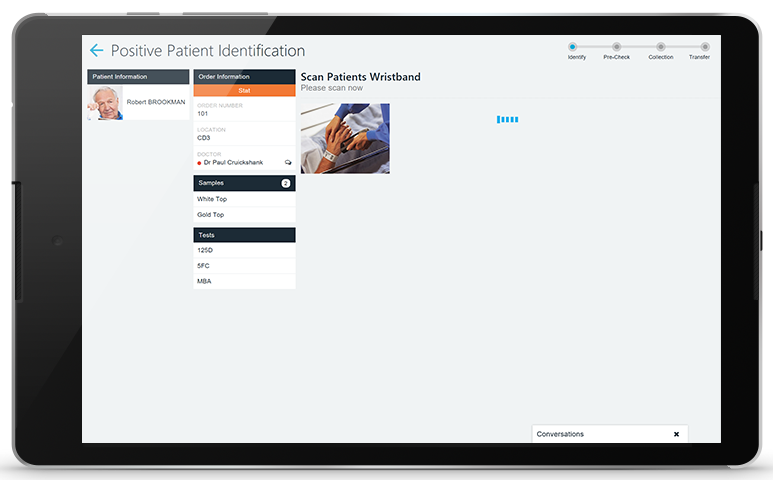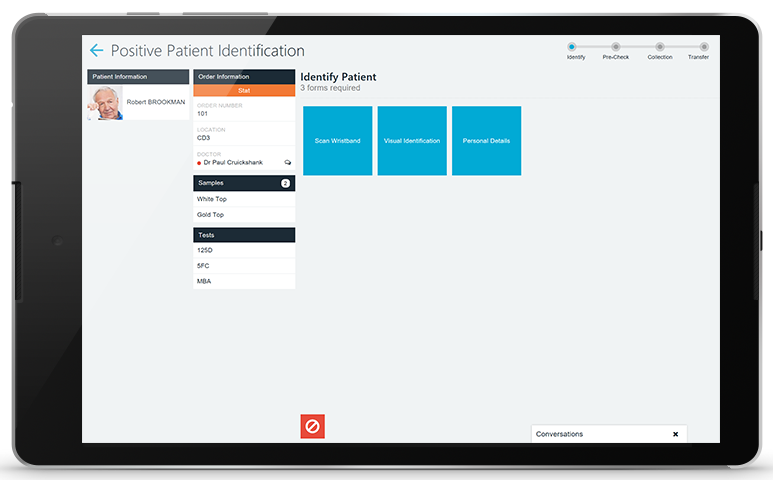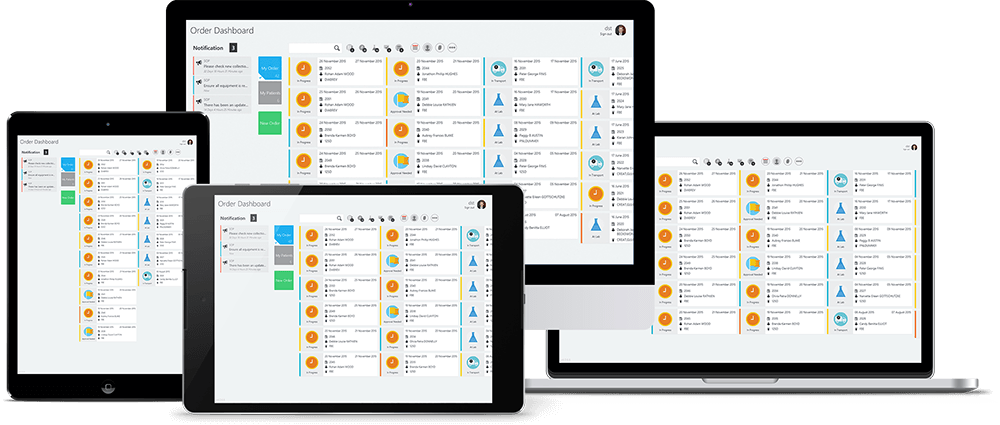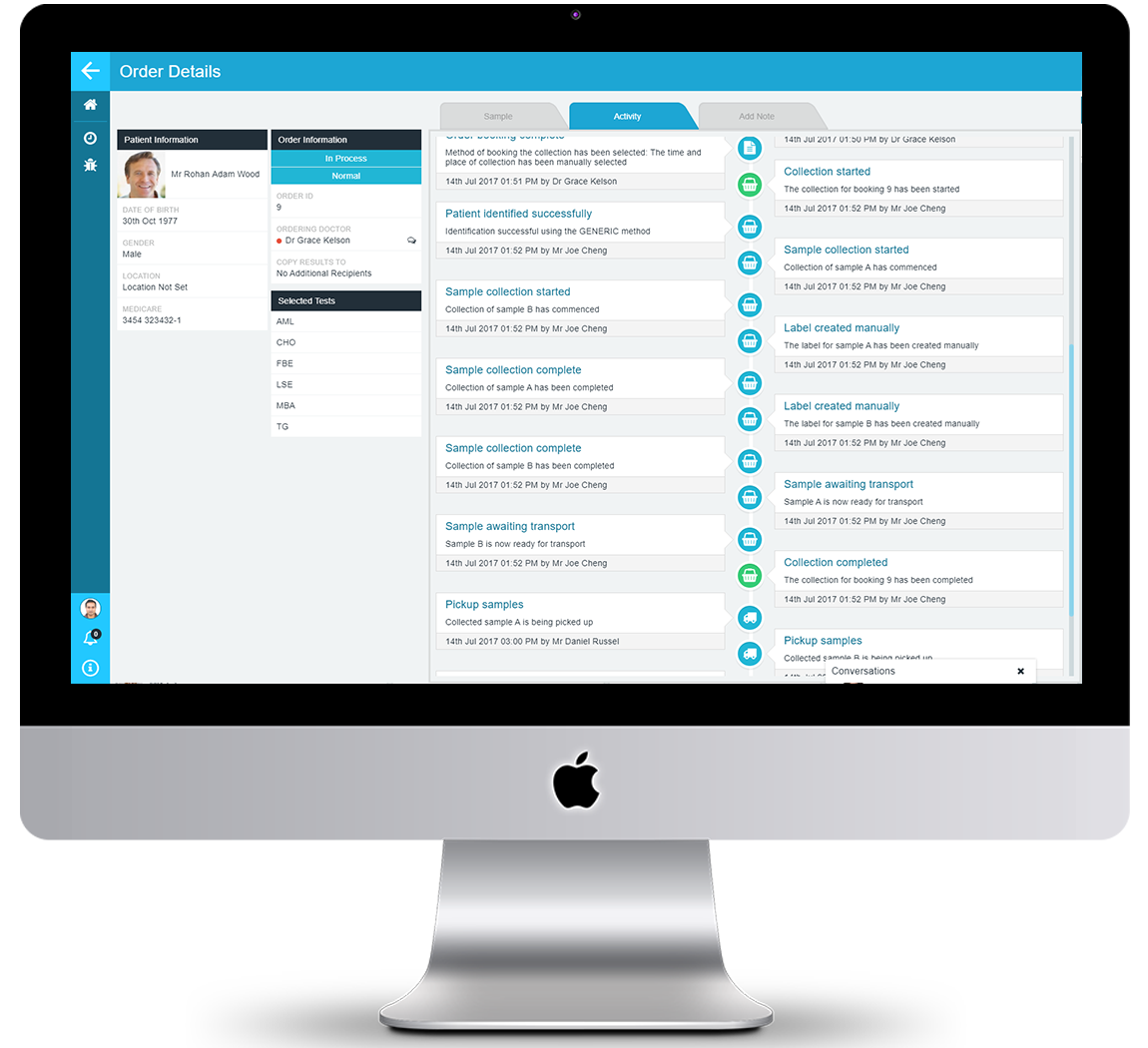PAMS Feature
Positive Patient Identification (PPID)
PROCESS INTEGRATION
Incorrect patient identification is one of the most common sources of errors and these errors can lead to serious risk to patient care and safety. Positive patient identification is critical the ensure proper specimen collection and test ordering. PAMS integrates best practice positive patient identification (PPID) methods into all apps where correct patient identification is a requirement. Integrated within the apps, PPID becomes a required procedure that is embedded within the app flow. The rules and methods for PPID can be defined for each organisation as required. PAMS maintains an audit trail of every PPID action, providing confidence of compliance with PPID standards.
- Integrated PPID rules & methods
- Audit trail of all PPID events
- Best practise PPID implementations

BEST PRACTICE IMPLEMENTATION

Using PAMS you can be sure that every time that positive patient identification is required, it is done in accordance with best practices. PAMS enable you to define and the Positive Patient Identification (PPID) procedures and rules for each app, and being integrated, these rules may not be bypassed or skipped. The audit trail means that you will know the details of each identification method used for every PPID event. PAMS allows you to easily add new method and integrate PPID point of care devices as you need or as new technology becomes available, meaning that you PAMS implementation is always “future proof”.
- Integrated support for PPID best practices
- Full audit trail of all PPID events
- Definable rules and methods
- Add methods and PPID devices as required
- Centralised management
DEFINABLE RULES
PAMS encourages and can enforce compliance with best-practice standards, but the rules that are applied are defined by you. You can define the methods that can be used as well as how many forms of identification must be used for each app within PAMS. For example, you may apply different PPID rules for ordering to that of collections, and you may want to use different methods of identification for hospital ward collections to that used at collection centres. You can change rules and add methods over time, and each PAMS app will be updated in line with your updated rules.
- Consistent rules applied across the organisation
- Define the forms of PPID to be used within each app
- Define mandatory requirements
- Define failure rules
- Integrated alerts and notifications

PLUG-IN METHOD SUPPORT

PAMS has been designed to respond to your changing needs, advancements in technology and changing best-practice standards. New methods for Positive Patient Identification can easily be added to PAMS apps though a centralised management centre. Once added, the new methods and associated rules will be automatically updated to every app user. This enables PAMS to be “future-proofed” and you can be confident that you will be able to stay in front of industry needs and technological advancements.
- Out-of-box PPID implemented methods
- Easy implementation of new methods
- Automated deployment of methods to all app users
DETAILED AUDIT TRAIL
PAMS maintains a detailed audit trail of every PPID action and event. The audit trail logs detailed information for each action, showing details of the process and application requirement (e.g. sample collection), the operator performing the identification, the patient being identified, the methods used and success or failure of each method. The audit trail enables you to analyse the PPID compliance, performance criteria and efficiency, enabling you to optimise training delivery and easily satisfy patient safety and compliance audits.
- Full PPID audit trail of events
- Historical analysis of process, methods and events
- Centralised management view
